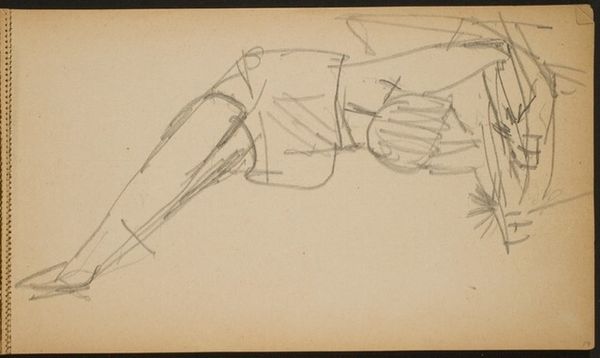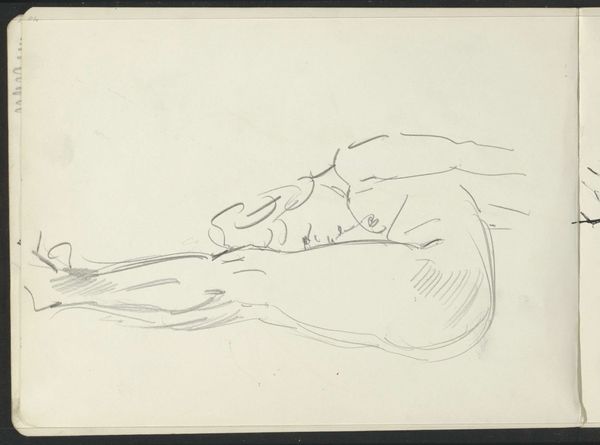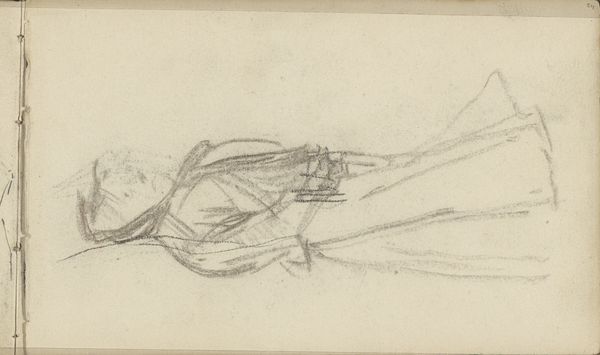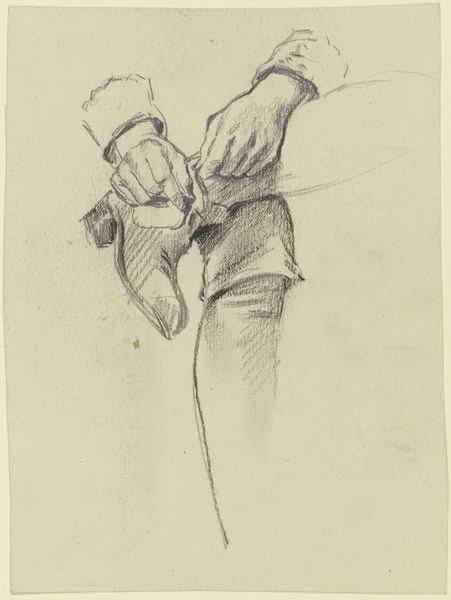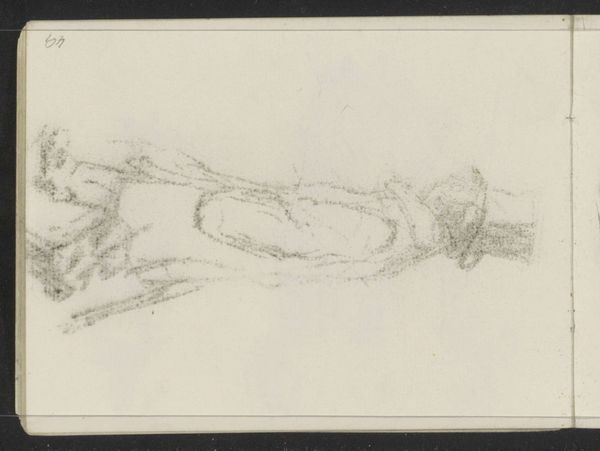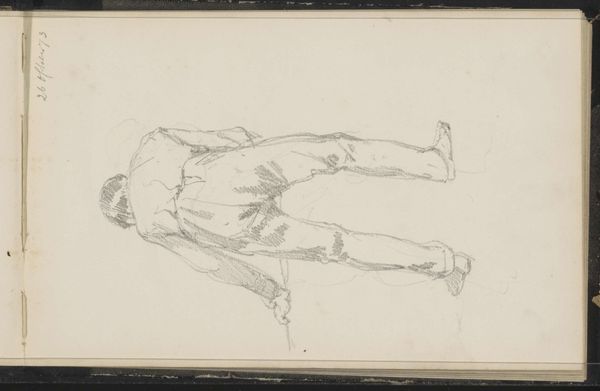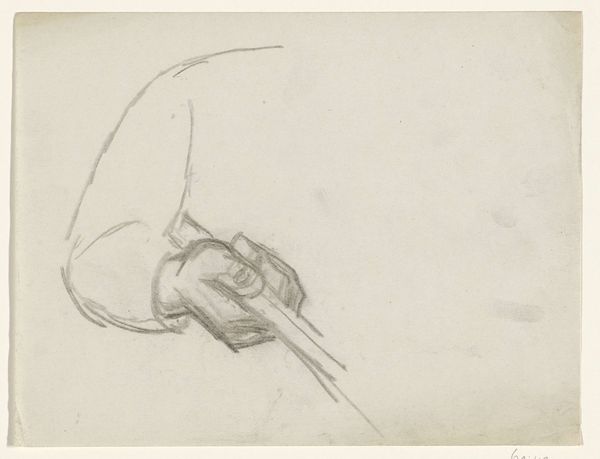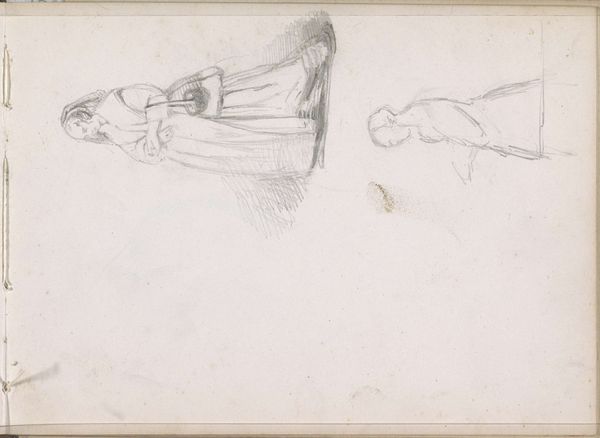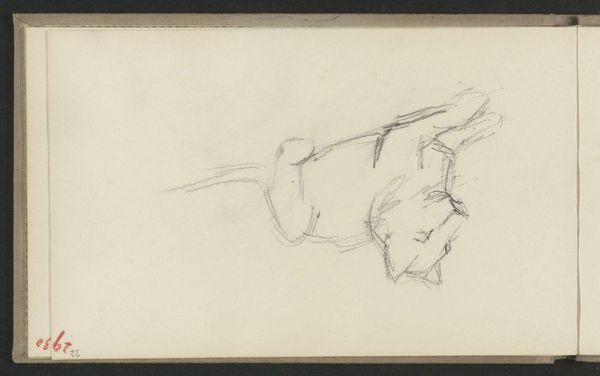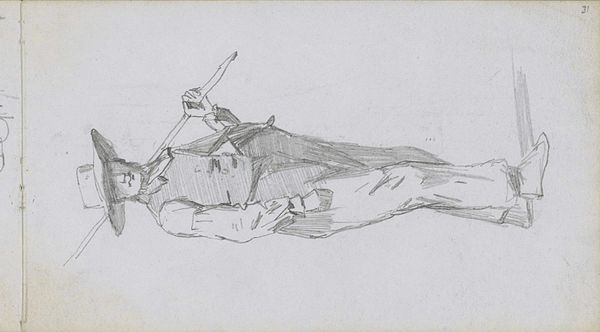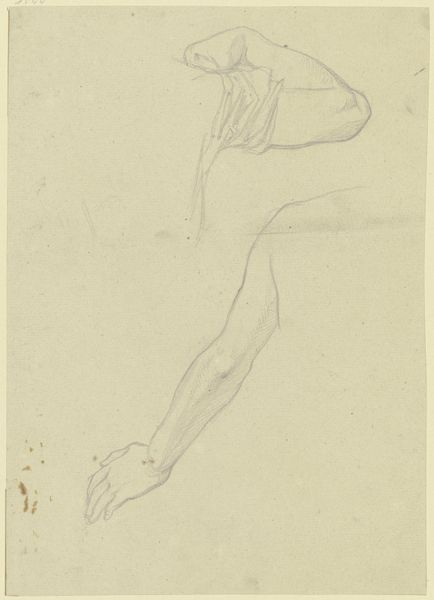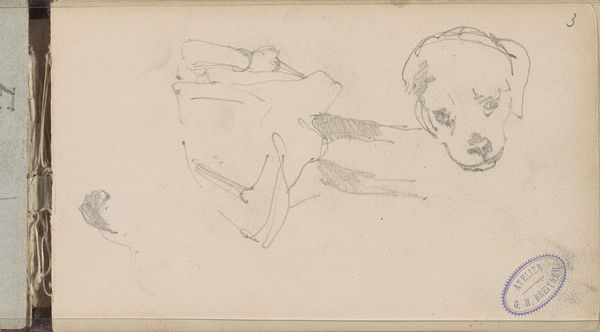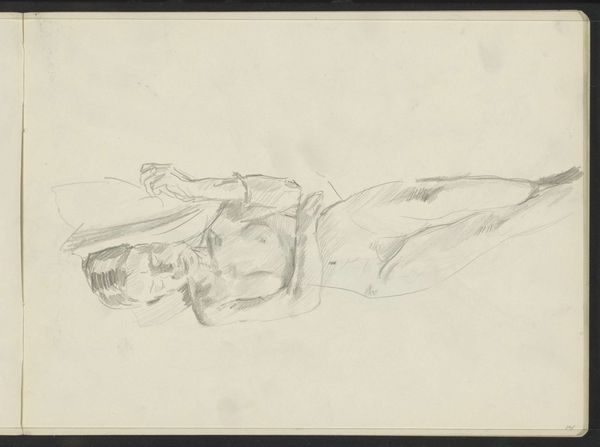
drawing, pencil
#
portrait
#
drawing
#
figuration
#
pencil
#
line
Copyright: Rijks Museum: Open Domain
Curator: Here we have "Boy in a Sailor Suit," a pencil drawing likely created between 1865 and 1913. What strikes you first about it? Editor: It feels like a fleeting memory, like catching a glimpse of something ephemeral. There's a certain casualness that lends itself to that sort of quiet nostalgia. It is mostly bare, really; what else is there beyond a few pencil lines suggesting this figure's form? Curator: Exactly! Its economy of line is remarkable. There’s something so charming about the immediacy of a sketch. This portrait encapsulates a very particular time, one might say of a colonial aspiration adopted as popular children's fashion during an age of naval expansion, reflecting a boy's ideal of becoming a little man and perhaps a little soldier or tradesman of the sea, even in peaceful times. The attire is fascinating. Editor: True, there is definitely an implied association with a sailor uniform and its connection to duty. You are right—it also begs some larger questions about youth, identity and social expectations—so fascinating given this drawing is of a person during their youngest and perhaps most innocent phase. Still, what is the emotional feel you take away from its almost minimalist expression? I'm curious. Curator: For me, it is more carefree. Look at the pose. Relaxed. The lines themselves have a soft quality; they don’t demand attention. It is so quiet and modest! There are these brief periods, sometimes after great turbulence in the studio or in one's personal life when creating art, in which all I aspire is to arrive at such simplicity as Bramine did. It feels like catching a breath of fresh air, you know? Editor: Perhaps you are speaking more to the subjective effect of "simple art" on yourself. Fair enough. But what about who is included as its main focus and subject and who is rendered invisible and without acknowledgement in such depictions? Are all histories or their actors regarded the same? In thinking about the subject of identity, even gender for instance—it has been argued that fashion played a significant role in blurring the rigid lines drawn on how boys and girls dress during this historical period. A simple white dress might serve as dress for either boys or girls before school age. Yet in the naval portrait you point out earlier, the figure's gender identity feels secure through this fashion; the identity solidified as distinct and independent from being girlish through his adoption of colonial masculinity through apparel. These may be heavy notions perhaps to attach to a mere pencil sketch of what might seem just a regular boy—still, for the same reason, they resonate profoundly! Curator: I concede. Art can have so many layers of interpretation. It makes looking all the more worthwhile, right? Editor: Exactly. A piece that feels, initially, so simple actually opens up many doors.
Comments
No comments
Be the first to comment and join the conversation on the ultimate creative platform.

